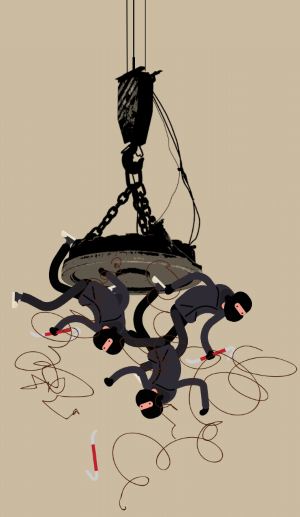Matteo Sandi, one of our Data Impact Fellows, shares findings from his research into metal crime.
Sharp increases in commodity prices brought about a boom in metal crime in the UK since the early 2000s. Earlier in the current decade, a bust followed. Policing and policy played a key role in quelling the rise in the theft of metals in recent years. The response of the British Transport Police in 2012 reduced metal crime by an estimated 30%. The Scrap Metal Dealers Act of 2013 was also an effective deterrent, as it hindered the ease with which stolen metal can be sold.
These are among the findings of my research with Tom Kirchmaier, Stephen Machin and Robert Witt. We studied the roles of prices, policing and policy in shaping the metal crime boom and bust that took place in the UK in the nine years between 2007 and 2015.
Our results showed that prices, policing and policy have all mattered in shaping the boom and bust of metal crime. Its initial rise since the early 2000s into a crime boom in 2011 was caused by steep increases in commodity prices, and then the policing response and government policy led to a crime bust. This is probably one of the more extreme cases of a crime boom and bust on which there is evidence. But the basic notion of crime dynamics embodied in the boom and bust is a broader one that applies to other crimes.
The sharp increases in commodity prices that occurred worldwide in the 2000s resulted in dramatic rises in the prices of metals.

At the same time, there were spectacular increases in metal crimes in many countries, including the UK. However, as with other crime booms, a bust followed this, at least in the context of the UK.
Metal theft has fallen very rapidly since near the start of the current decade. Generating an understanding of the reasons for sch a marked boom and bust is an important research question in the economics of crime.
The empirical analysis shows that metal prices are strong drivers of metal crime, in line with the idea that changing economic returns shape crime.
However, in early 2012, when the scale of metal theft in the UK had reached unprecedented levels, the British Transport Police introduced ‘Operation Tornado’ – an anti-metal crime policy that was trialled across the police forces of Northumbria, Durham and Cleveland and then extended to other police force areas in the country.
We estimate that this policing response reduced metal crime by more than 30% within a few months.
Finally, the UK government also responded in October 2013 with a new Scrap Metal Dealers Act.
Our study shows that, under the new tougher regulatory system, the economic activity of pre-existing scrap metal dealers decreased.
In particular, turnover of scrap metal dealers in England and Wales fell by around 17% between 2014 and 2015. Turnover per employee of scrap metal dealers also fell by an estimated 15%, suggesting that the fall in turnover is not due to disproportionate rates of dismissal of employees in scrap metal dealers. Finally, the EBITDA margin of scrap metal dealers also decreased.
This was arguably the result of the reduced scope for potential metal criminals to sell stolen metal to scrap metal dealers, and by association reflects the diluted economic returns of metal crime under the stricter regulatory regime.

Matteo Sandi @McmSandi is one of our UK Data Service Data Impact Fellows. Matteo is a Research Economist at the Centre for Economic Performance (CEP) at the London School of Economics and Political Science (LSE). Matteo joined LSE in October 2015 and his current fields of research are the economics of crime and the economics of education.
